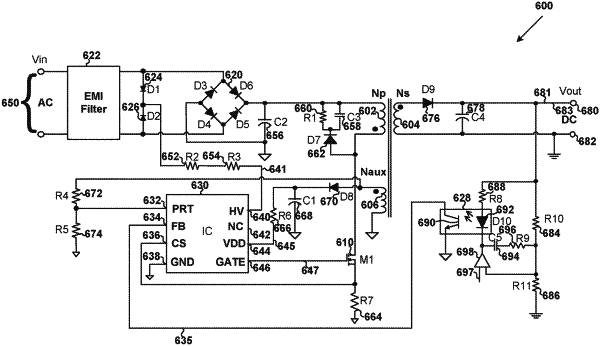| CPC H02M 3/33523 (2013.01) [H02M 1/08 (2013.01); H02M 1/36 (2013.01); H02M 1/44 (2013.01)] | 31 Claims |

|
1. A controller for a power converter, the controller comprising:
a first terminal configured to receive a first voltage;
a second terminal connected to a capacitor and biased to a second voltage;
a voltage detector configured to receive the second voltage from the second terminal and generate a detection signal based at least in part on the second voltage;
a charging controller configured to receive the detection signal and generate a first control signal based at least in part on the detection signal; and
a charging current generator configured to receive the first voltage from the first terminal and receive the first control signal from the charging controller;
wherein the voltage detector is further configured to:
detect that the second voltage has decreased to a first predetermined threshold; and
generate the detection signal indicating that the second voltage has decreased to the first predetermined threshold;
wherein the charging controller is further configured to:
in response to the detection signal indicating that the second voltage has decreased to the first predetermined threshold, generate the first control signal indicating that a charging current is to be generated;
wherein the charging current generator is further configured to:
in response to the first control signal indicating that the charging current is to be generated, generate the charging current that flows through the second terminal to charge the capacitor associated with the second voltage.
|